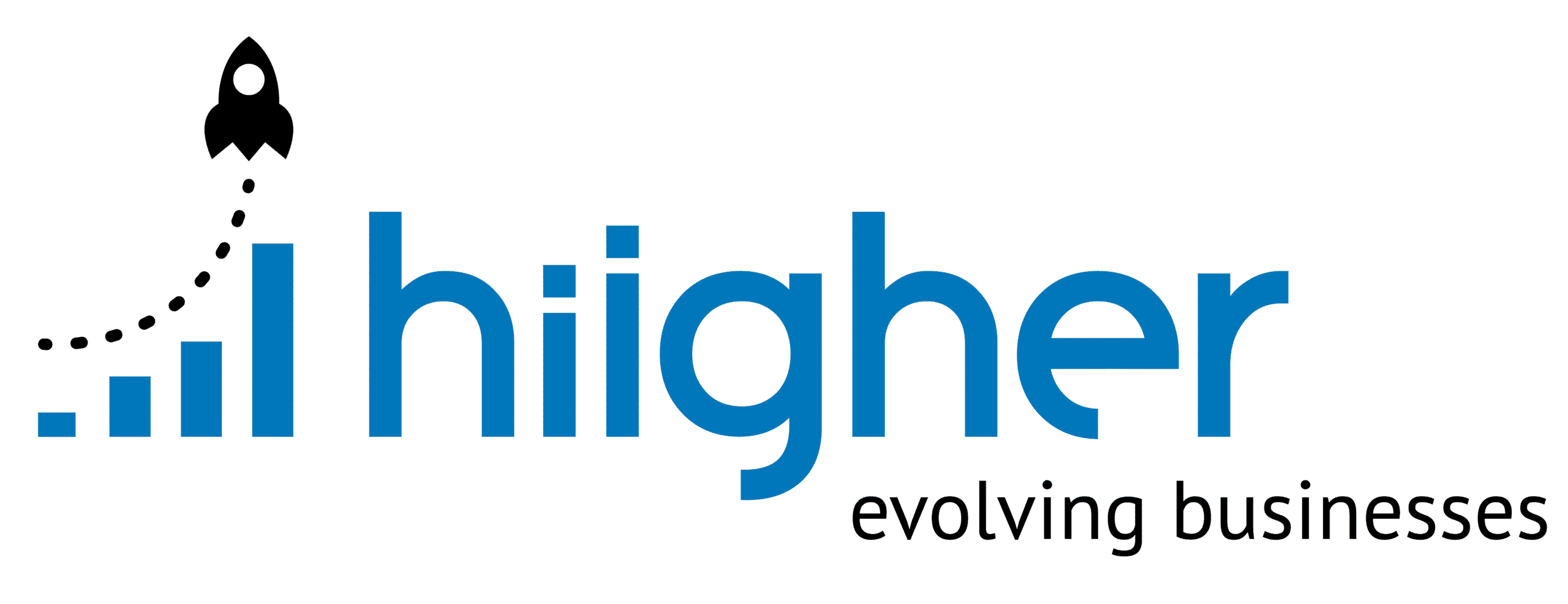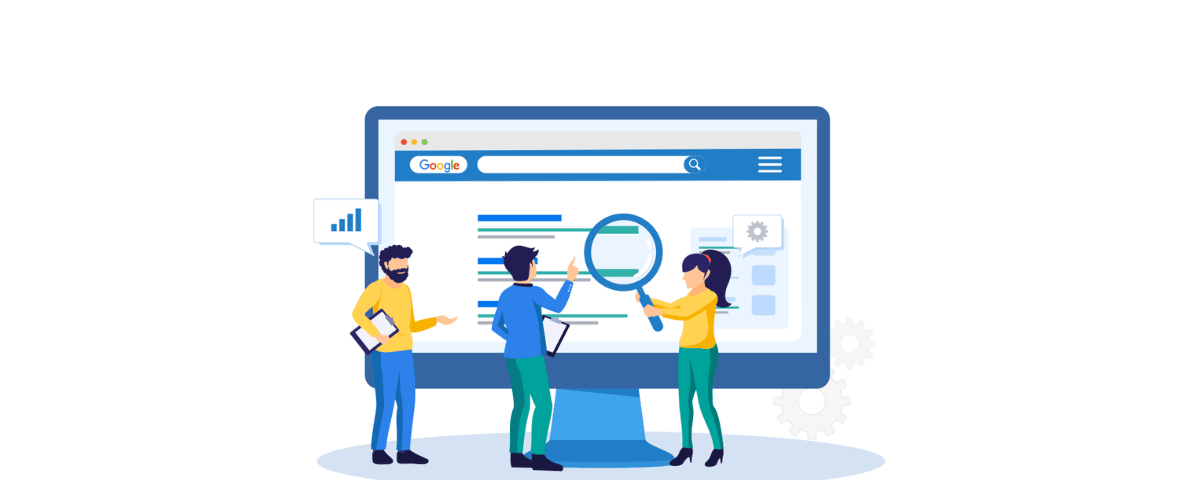- Instagram Marketing Strategy 2025: Tips, Tools & Growth - September 3, 2025
- Facebook Marketing Guide 2025: Strategies to Boost ROI - September 3, 2025
- How to Do an SEO Audit in 2025: Step-by-Step Guide - September 3, 2025
Think of your website as a house. Off-page SEO, things like backlinks and brand mentions, are like the reputation your house has in the neighborhood. But on-page SEO? That’s everything inside your home: the structure, the layout, the decorations, even how easy it is for a guest to walk through. If the foundation is shaky or the rooms are cluttered, people won’t stick around, and Google won’t recommend it.
On-page SEO is about directly improving your website’s content, structure, and technical details to make both users and search engines happy. Done right, it helps you show up for the right searches, keep people engaged, and, most importantly, turn those visitors into customers.
At Hiigher, we’ve seen businesses double their organic traffic just by tightening their on-page SEO, even before touching backlinks or paid ads. That’s how powerful it is when done strategically.
Contents
- Key Takeaways You Can’t Ignore
- Understanding the Core of On-Page SEO
- On-Page SEO vs. Off-Page SEO
- The Building Blocks of On-Page Optimization
- Key On-Page SEO Factors
- Content and HTML Optimization
- Why Content Quality is the Ultimate Ranking Factor
- Expertise and Authority (Google’s E-E-A-T in Action)
- Keyword Research, The Foundation of On-Page SEO
- Optimizing Title Tags for Clicks and Rankings
- Crafting Meta Descriptions That Earn Clicks
- Structuring Content With Header Tags
- Satisfying Search Intent (The Secret Sauce of SEO)
- Using Internal Links to Boost Rankings and Engagement
- Creating SEO-Friendly URLs That Users (and Google) Love
- Optimizing Images for SEO Performance
- The Power of Schema Markup and Rich Snippets
- Page Speed, Why Every Second Matters
- Mobile Optimization, Non-Negotiable in 2025
- Improving User Experience for Higher Retention
- Writing Unique and Valuable Content
- Leveraging Original Research and Case Studies
- Optimizing for Featured Snippets (Position Zero)
- Monitoring and Adapting On-Page Strategies
- Tools That Make On-Page SEO Easier
- Measuring SEO Performance With the Right Metrics
- Common On-Page SEO Mistakes to Avoid
- Keeping Content Fresh and Up-to-Date
- Aligning On-Page SEO With Your Bigger Strategy
- Frequently Asked Questions
- Conclusion
Key Takeaways You Can’t Ignore
If you’re short on time, here are the most important on-page SEO principles to remember:
- Write title tags and meta descriptions with relevant keywords that make people want to click.
- Use header tags (H1, H2, H3) to organize your content, so it’s easy for readers to skim and search engines to understand.
- Create expert-driven content that builds trust and follows Google’s E-E-A-T (Experience, Expertise, Authoritativeness, Trustworthiness).
- Keep your URLs short, descriptive, and keyword-friendly. Optimize every image with filenames and alt text.
- Update your content regularly, because outdated information not only hurts rankings but also erodes trust.
Understanding the Core of On-Page SEO
Here’s the truth: on-page SEO is the foundation of your search visibility. Without it, all the backlinks and PR in the world won’t save you.
At its core, on-page SEO is about two things:
- Helping search engines understand your page. You do this by using relevant keywords in smart places like your title tag, headers, and meta description. These little cues tell Google exactly what your page is about.
- Improving user experience. Even if you rank, it won’t matter if users bounce. Clear structure, mobile-friendliness, and fast load times keep people reading (and converting).
Here’s an insider tip: when optimizing content, always think about user intent. If someone searches “ best running shoes for beginners,” they don’t want a history lesson on footwear, they want recommendations. That’s the kind of alignment Google rewards.
In my own SEO audits, I often find businesses missing this simple step. Their pages are stuffed with keywords but completely ignore what the searcher actually wanted. Fixing that mismatch often leads to quick ranking wins.
On-Page SEO vs. Off-Page SEO
A lot of marketers get confused about the difference between on-page and off-page SEO. Here’s the simplest way I explain it to clients:
- On-Page SEO is everything you can control directly on your website, your content, structure, HTML tags, and user experience.
- Off-Page SEO is everything happening outside your site that builds your authority, backlinks, social media signals, brand mentions.
Think of it like this: on-page SEO is your store setup (lighting, displays, layout), while off-page SEO is your reputation in the town. Both influence whether people shop with you, but your store setup is the one you can fix today.
| On-Page SEO | Off-Page SEO |
| Content & HTML optimization | Backlink building |
| User experience | Social media engagement |
| Immediate ranking impact | Gradual authority growth |
| Metrics: CTR, dwell time | Metrics: backlinks, referral traffic |
If you’re looking for quick wins, focus first on on-page. Updating a title tag or rewriting a meta description can move the needle in days, while waiting on backlinks can take months.
The Building Blocks of On-Page Optimization
To rank higher and keep readers engaged, you need to nail a handful of on-page SEO fundamentals. These are the non-negotiables that every high-performing site gets right:
- Title Tags & Meta Descriptions → The first thing people see in search results. Keep them short, keyword-rich, and compelling.
- Header Tags (H1, H2, H3) → They act like a roadmap for both users and search engines. Use them to structure your content clearly.
- Internal Linking → Point readers to related content on your site. This keeps them engaged and distributes link equity across your pages.
- E-E-A-T Signals → Prove your expertise and trustworthiness with well-researched, credible content. This is critical for YMYL (Your Money or Your Life) topics like health, finance, or education.
Even small tweaks in these areas can deliver noticeable ranking improvements.
Key On-Page SEO Factors
Here’s a quick reference table that highlights what to focus on:
| Factor | Best Practice | Why It Matters |
| Title Tags | 50–60 characters, include keyword, unique per page | Improves visibility and CTR |
| Meta Descriptions | Under 160 characters, engaging, keyword-rich | Attracts clicks even if not a ranking factor |
| Header Tags | One H1, structured H2/H3s | Improves readability and SEO hierarchy |
| Internal Links | Use natural anchor text, link to relevant pages | Boosts engagement and link equity |
| E-E-A-T | Cite experts, update content, provide original insights | Builds trust and authority |
I once worked on an eCommerce site where simply fixing title tags (adding keywords and making them unique) boosted organic traffic by 40% in two months. Sometimes, it’s the “boring” fundamentals that drive the biggest results.
Content and HTML Optimization
Search engines are smarter than they used to be, but they still depend on clear signals from your site. Your job is to make those signals as easy to read as possible.
- Place your main keyword in the first 100–150 words of your content.
- Use short, keyword-rich URLs (e.g., /on-page-seo-tips/ instead of /page?id=1234).
- Add schema markup to highlight content details and improve your chances of appearing in rich snippets.
And don’t just “set it and forget it.” The smartest brands audit and update their content regularly to keep it aligned with evolving algorithms and user expectations.
Why Content Quality is the Ultimate Ranking Factor
If there’s one thing I’ve learned after auditing hundreds of sites, it’s this: Google rewards pages that actually help people.
You can’t trick search engines with keyword stuffing anymore. What works now is creating content with a unique value proposition that answers real questions, offers original insights, and builds trust.
What Makes Content Truly Valuable?
High-quality content means:
- Originality → Avoid regurgitating what’s already on page one. Add something new.
- Depth → Go beyond surface-level explanations. Provide detailed answers.
- Relevance → Match your content to user intent, why they searched in the first place.
For example, when a SaaS client came to Hiigher with stagnant blog traffic, we found their posts were generic and shallow. By rewriting them with case studies, expert quotes, and updated stats, we saw a 3x increase in organic traffic within six months. That’s the difference between content that fills space and content that earns rankings.
Expertise and Authority (Google’s E-E-A-T in Action)
If you’re writing about health, finance, education, or any topic where accuracy is critical, E-E-A-T (Experience, Expertise, Authoritativeness, Trustworthiness) is your best friend.
Here’s how to show it:
- Cite credible sources and link to them.
- Include expert commentary or your own professional experience.
- Update content frequently to keep it relevant.
One of my favorite strategies is adding a short anecdote from client campaigns. Even a single real-world example makes your content stand out from the sea of generic SEO advice.
Long-form guides also tend to attract more backlinks and shares, which further boosts your site’s authority.
Keyword Research, The Foundation of On-Page SEO
Without keyword research, on-page SEO is like building a house without a blueprint. You might get something up, but it won’t be sturdy or useful.
Start with tools like Google Keyword Planner, Ahrefs, or SEMrush to uncover search terms your audience is already using. Then sort them into categories:
- Primary Keywords → High-traffic, central to your topic (e.g., “on-page SEO”).
- Secondary Keywords → Variations and related terms (e.g., “on-page optimization,” “SEO ranking factors”).
- Long-Tail Keywords → Highly specific searches with less competition (e.g., “how to optimize title tags for SEO”).
Don’t just chase volume. Go after intent. A keyword with 500 monthly searches but high buyer intent often outperforms one with 10,000 searches and vague intent.
Strategic Keyword Placement Techniques
Once you’ve picked your keywords, it’s time to use them intentionally (not forcefully).
Here’s where to place them for maximum impact:
| Placement Area | Best Practice | SEO Benefit |
| First 100–150 Words | Naturally insert your primary keyword | Signals immediate relevance |
| H1 Tag | Include your main keyword | Defines page topic |
| Subheadings (H2–H6) | Use variations and related terms | Strengthens topical structure |
| Body Content | Sprinkle naturally, use synonyms | Avoids stuffing, boosts reach |
Example: Instead of awkwardly repeating “on-page SEO” ten times, use variations like “on-page optimization techniques” or “SEO best practices for websites.” Google is smart enough to understand context.
In one case, simply adjusting keyword placement (moving the primary keyword into the opening paragraph and H1) improved a client’s ranking from position 12 to position 4 in just a few weeks.
Optimizing Title Tags for Clicks and Rankings
Your title tag is the first impression your page makes in search results. It’s like the headline of an ad, if it doesn’t grab attention, people won’t click, no matter how great your content is.
Best practices for title tags:
- Keep them between 50–60 characters so they don’t get cut off.
- Put your target keyword near the beginning.
- Make them unique for each page to avoid duplication.
- Focus on clarity and intrigue, give searchers a reason to click.
Did you know? Google rewrites over 60% of title tags because they’re too long or irrelevant. Stick to the basics, and you’ll have more control over how your page shows up.
Crafting Meta Descriptions That Earn Clicks
Meta descriptions aren’t a direct ranking factor, but they can make or break your click-through rate (CTR).
Think of them as your mini sales pitch. In 150–160 characters, you need to:
- Summarize the value of your page.
- Include your primary keyword (Google may bold it in results).
- Write for humans, not bots, your goal is to spark curiosity.
Example:
“Learn about on-page SEO best practices to optimize your site.” (boring, generic)
“Struggling to rank? Here’s how on-page SEO, from title tags to site speed, can boost traffic and keep visitors hooked.”
Regularly revisit high-traffic pages and refresh their meta descriptions. Small tweaks can lead to big CTR gains.
Structuring Content With Header Tags
Headers (H1, H2, H3) are more than just formatting, they guide both readers and search engines through your content.
- One H1 per page → This is your main title. It should include your primary keyword.
- H2 tags → Use these for major sections of your article.
- H3 tags → Perfect for breaking down details, examples, or step-by-step explanations.
| Header Tag | Purpose | Example |
| H1 | Main Title | On-Page SEO Best Practices |
| H2 | Section Heading | How to Optimize Title Tags |
| H3 | Supporting Detail | Title Tag Length and Keywords |
The easier your content is to skim, the longer people will stay. Lower bounce rates = stronger SEO signals.
Satisfying Search Intent (The Secret Sauce of SEO)
Here’s the part most people miss: even perfectly optimized content won’t rank if it doesn’t match user intent.
Search intent falls into four main categories:
- Informational → “What is on-page SEO?”
- Navigational → “Ahrefs login”
- Transactional → “Buy SEO audit tool”
- Comparative/Commercial → “Best SEO tools vs SEMrush”
Your job is to align your page with the right intent.
Example: If someone searches “on-page SEO checklist”, they expect a step-by-step guide. If you give them a 2,000-word essay instead, they’ll bounce.
Practical Steps to Align With Intent
- Study the top 5 ranking pages for your target keyword. What format do they use? Lists? Guides? Product comparisons?
- Place your primary keyword in your title and intro to signal immediate relevance.
- Regularly update content to reflect new trends and behaviors.
Pro tip: Use Google Search Console to check the exact queries driving traffic to your page. Then refine your content to match what users are actually looking for.
Using Internal Links to Boost Rankings and Engagement
Internal links are like roads inside your website, they connect one piece of content to another, guiding both users and search engines.
Here’s why they matter:
- They help Google understand the relationship between your pages.
- They spread link equity across your site, boosting weaker pages.
- They keep users engaged longer, lowering bounce rates.
Best practices for internal linking:
- Use natural anchor text (avoid generic “click here”).
- Link only when it adds real value.
- Audit your site regularly to find and fix broken links.
At Hiigher, we often use the hub-and-spoke model for clients. Imagine one central “hub” page (like a detailed SEO guide) that links out to smaller, focused articles (the “spokes”). This structure not only improves rankings but also makes navigation seamless for readers.
Creating SEO-Friendly URLs That Users (and Google) Love
A messy URL is like a cluttered business card, it confuses people and looks unprofessional. A clean URL, on the other hand, builds trust and signals relevance.
Best practices for SEO-friendly URLs:
- Keep it short → Under 60 characters, if possible.
- Include target keywords → Example: /on-page-seo-tips/ instead of /page?id=xyz123.
- Use hyphens → Google treats them as spaces, making URLs easier to read.
- Avoid unnecessary characters → No “&” or “%20” type clutter.
Data shows that shorter, keyword-rich URLs consistently earn higher click-through rates than long, messy ones.
Optimizing Images for SEO Performance
Images make content more engaging, but if they’re not optimized, they can slow your site down, which hurts rankings.
Descriptive Filenames & Alt Text
- Always rename files before uploading. Instead of IMG_234.jpg, use on-page-seo-checklist.jpg.
- Write alt text that describes the image and naturally includes a keyword.
- Keep alt text under 125–150 characters for accessibility.
Compression for Faster Load Times
Page speed is a direct ranking factor. Tools like TinyPNG or ImageOptim can cut file sizes by up to 80% without visible quality loss.
Lazy loading is another must-have. It ensures images only load as users scroll, improving performance.
Schema Markup for Images
If you really want to go next level, add schema markup (specifically ImageObject) to give Google more context about your visuals. This increases your chances of showing up in Google Images or even earning rich snippets.
Example: A product image with schema markup can show ratings and availability right in search results, which can boost clicks dramatically.
The Power of Schema Markup and Rich Snippets
Schema markup is like giving search engines a cheat sheet about your content. Instead of guessing what your page is about, Google gets clear, structured data that can improve how your site appears in search results.
Benefits of schema markup:
- Increases chances of rich snippets (e.g., star ratings, FAQs, product details).
- Makes your listings stand out, which can boost CTR by up to 30%.
- Helps Google understand your content better, improving relevance.
Pro tip: Use JSON-LD format (Google’s preferred method). It’s easier to implement and maintain than Microdata or RDFa.
Example: Adding FAQPage schema to a blog post can land your content directly in Google’s FAQ dropdowns, massively increasing visibility.
Page Speed, Why Every Second Matters
Google has been blunt: page speed is a ranking factor. But beyond SEO, it impacts your bottom line.
- A 1-second delay in load time can cut conversions by 7%.
- Nearly half of users expect a page to load in under 2 seconds.
How to Improve Page Speed
- Compress images (we covered this in Chunk 5).
- Minimize JavaScript and CSS bloat.
- Enable browser caching so returning visitors load faster.
- Use a reliable hosting provider with a CDN (Content Delivery Network).
When Hiigher audited a client’s eCommerce store, we shaved 3 seconds off their load time by compressing images and cleaning up unused scripts. The result? A 22% drop in bounce rates.
Mobile Optimization, Non-Negotiable in 2025
With more than half of global web traffic coming from mobile, Google’s mobile-first indexing means your site’s mobile version is the version that counts.
Essentials for mobile optimization:
- Responsive design → Your site should adapt smoothly to different screen sizes.
- Clickable elements → Buttons and links should be easy to tap (no zooming required).
- AMP (Accelerated Mobile Pages) → Optional, but helpful for content-heavy sites.
Test your site with Google’s Mobile-Friendly Test. If navigation feels clunky on your phone, your users (and Google) will feel the same way.
Improving User Experience for Higher Retention
At the end of the day, SEO isn’t just about rankings, it’s about keeping people on your site.
Optimizing Page Layout
- Place your most important content above the fold (where users see it without scrolling).
- Break up text with visuals, bullet points, and white space.
- Avoid clutter, too many pop-ups or ads drive people away.
Enhancing Content Readability
- Use short paragraphs (2–4 sentences).
- Stick to clear, conversational language.
- Add supporting visuals like infographics or charts.
Streamlining Navigation
- Use hierarchical menus so users can find content quickly.
- Add breadcrumb navigation to help visitors track where they are.
- Ensure navigation works just as smoothly on mobile as on desktop.
Data shows that 76% of users cite navigation as a reason they stay (or leave) a website. Make it easy, and you’ll boost both engagement and SEO.
Writing Unique and Valuable Content
No matter how polished your technical SEO is, content is still the foundation of on-page SEO. If your writing sounds like it could live on any competitor’s site, Google won’t have a reason to rank you higher.
Here’s how to make your content unique:
- Provide fresh insights → Share personal takes or lessons from real campaigns.
- Use detailed examples → Walk readers through scenarios instead of speaking in generalities.
- Keep it practical → Actionable tips outperform vague, theoretical writing every time.
When Hiigher works with clients, we often discover their blogs are just summaries of what’s already ranking. By adding unique examples, fresh data, and case studies, we help their content stand out, and rankings follow.
Leveraging Original Research and Case Studies
Want backlinks, shares, and authority all at once? Publish original research.
Why it works:
- It’s content people can’t find anywhere else.
- It positions your brand as a thought leader.
- It attracts organic backlinks (without begging for them).
Ways to Add Research and Case Studies
- Run surveys → Even a poll with 100 responses can be turned into a unique blog post.
- Share client case studies → Walk readers through the problem, solution, and results.
- Visualize data → Use charts, infographics, or graphs to make findings digestible.
Example: A B2B client doubled backlinks by publishing a study on industry pricing trends. We turned their internal data into a report, and it quickly became a go-to resource in their niche.
Optimizing for Featured Snippets (Position Zero)
If you’ve ever seen a Google result that answers your question before you even click, that’s a featured snippet. Landing one of these spots can skyrocket your traffic because you’re effectively ranked above #1.
Best practices for earning featured snippets:
- Answer common questions in short, clear paragraphs (40–60 words).
- Use bullet lists and tables when explaining step-by-step processes.
- Place your primary keyword and question near the top of your content.
- Add schema markup (like FAQ schema) to reinforce context.
Example: If you’re targeting “What is on-page SEO?” add a concise 2–3 sentence definition early in your article. Google loves content that cuts straight to the answer.
Don’t forget to check which snippets competitors already own. If they’re ranking with a weak answer, you have a chance to take it.
Monitoring and Adapting On-Page Strategies
On-page SEO isn’t “set it and forget it.” Search algorithms evolve, competitors update their content, and user behavior shifts. If you’re not monitoring and adjusting, you’ll slowly slip in rankings.
What to Track Regularly
- Organic traffic → Spot trends and sudden drops.
- Keyword rankings → See which terms are climbing or slipping.
- Click-through rates (CTR) → If impressions are high but clicks are low, rework your title tags and meta descriptions.
- Bounce rate & dwell time → Low engagement signals that your content doesn’t match intent.
At Hiigher, we build quarterly content audits into client strategies. It’s not just about fixing errors, it’s about spotting new opportunities, like targeting emerging keywords or updating old posts that have started losing traffic.
Tools That Make On-Page SEO Easier
You don’t have to fly blind. These tools give you the data to back up your SEO decisions:
- MozBar → Quick in-browser checks for keyword usage and page authority.
- Ahrefs Site Audit → Identifies broken links, thin content, and crawl issues.
- Google PageSpeed Insights → Pinpoints performance issues dragging down your site.
- SEMrush On-Page SEO Checker → Suggests improvements for content, technical elements, and keywords.
- Screaming Frog SEO Spider → Crawls your site and flags issues with title tags, meta descriptions, and URL structure.
Use these tools regularly, not just once. SEO is about ongoing optimization, not one-off fixes.
Measuring SEO Performance With the Right Metrics
It’s easy to get lost in vanity metrics. Stick to the numbers that directly affect business growth:
- Organic Traffic → Shows how visible your site is in search engines.
- Keyword Rankings → Helps you understand which content pieces are driving visibility.
- Engagement Metrics (CTR, bounce rate, dwell time) → Reveal whether your content satisfies search intent.
- Conversions → The real end goal, form fills, sign-ups, or purchases from organic visitors.
Example: One client obsessed over impressions until we showed them conversions were stagnant. Once we shifted focus to optimizing content for the keywords that actually converted, revenue from organic search grew by 47%.
Common On-Page SEO Mistakes to Avoid
Even seasoned marketers slip up on the basics. Here are the pitfalls I see most often:
- Neglecting title tags and meta descriptions → Generic or too long, costing clicks.
- Using multiple H1 tags → Confuses search engines about your main topic.
- Keyword stuffing → Makes content unreadable and risks penalties.
- Forgetting image optimization → Slows down your site, hurting rankings.
- Ignoring updates → Outdated content sends signals that your site isn’t trustworthy.
Fixing these errors often delivers faster results than advanced tactics because you’re removing roadblocks that drag your site down.
Keeping Content Fresh and Up-to-Date
One of the easiest ways to improve rankings is also one of the most overlooked: updating your content.
Google favors freshness, especially for topics that evolve quickly (like SEO, tech, or health). Outdated stats or broken links signal to both search engines and readers that your site isn’t reliable.
How to Keep Content Fresh
- Run annual content audits to identify pages that have lost traffic.
- Update stats, add new sections, or expand with long-tail keywords.
- Remove or rewrite sections that no longer reflect current trends.
Case in point: After refreshing a 3-year-old blog post for a client with new data and examples, organic traffic jumped over 300% in 60 days.
Aligning On-Page SEO With Your Bigger Strategy
On-page SEO shouldn’t live in a silo. It works best when aligned with your overall marketing and SEO strategy.
- Consistency across elements → Titles, headers, and meta descriptions should reinforce the same theme.
- Internal linking strategy → Funnel visitors from awareness-stage blogs to conversion-focused pages.
- Adaptation to algorithm updates → Refresh pages after major Google updates to maintain relevance.
At Hiigher, we combine on-page SEO with paid campaigns, branding, and automation. This integrated approach means clients don’t just rank, they generate measurable growth.
Frequently Asked Questions
What is On-Page SEO?
On-page SEO means improving the elements you control directly on your website, like content, structure, and technical setup, to increase rankings and traffic.
What Are the Four Types of SEO?
- On-Page SEO (content & HTML optimization)
- Off-Page SEO (backlinks, social signals)
- Technical SEO (crawlability, site speed)
- Local SEO (maps, local listings, geo-targeted content)
What’s an Example of On-Page SEO?
Using target keywords in your blog title and headers, writing descriptive alt text for images, and linking internally to related articles.
Which is Better, On-Page or Off-Page SEO?
Neither works alone. On-page gives you immediate control and quicker results, while off-page builds long-term authority. The best strategies combine both.
Conclusion
Here’s the reality: on-page SEO isn’t a one-time checklist, it’s an ongoing strategy.
By tightening your titles, optimizing your meta descriptions, structuring with headers, updating your content, and aligning with user intent, you’ll build a site that not only ranks but keeps growing.
Remember, Google rewards clarity, expertise, and user satisfaction. If you consistently refine your pages with these principles in mind, your site won’t just climb the rankings, it’ll stay there.
The businesses that win with SEO aren’t the ones who “optimize once.” They’re the ones who measure, update, and improve, over and over again.
And if you’re ready to go beyond checklists and into full-scale SEO execution, agencies like Hiigher specialize in building campaigns that connect, convert, and scale without the fluff.
How useful was this?
Click on a star to rate it!
Average rating 0 / 5. Vote count: 0
No votes so far! Be the first to rate this post.
We are sorry that this post was not useful for you!
Let us improve this post!
Tell us how we can improve this post?




